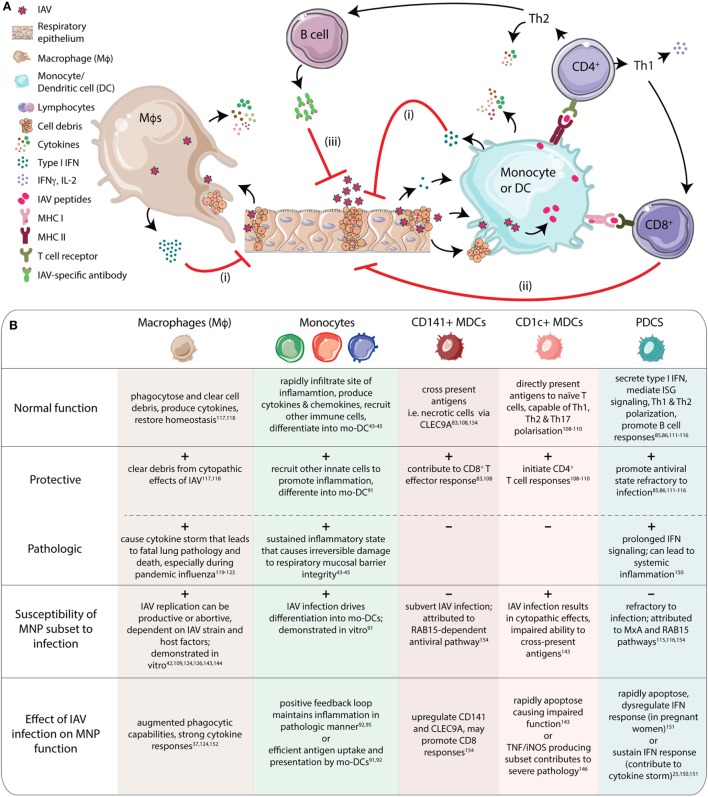Figure 2.
Human mononuclear phagocytes (MNPs) play a multitude of roles to mediate immune protection during influenza A virus (IAV) infection. (A) MNP subsets have many overlapping functions. Macrophages (Mϕs) clear up cell debris and release cytokines. Monocytes and dendritic cells (DCs) can also release cytokines and present antigens to initiate adaptive responses. (i) Following IAV infection of respiratory epithelium, Mϕs, monocytes, and DCs respond to the virus and cell debris, launching potent cytokine responses (TNFα, IL-6, IL-12p40, and IL-10), including interferon (IFN)α. Induction of interferon-stimulated genes (ISGs) promotes an antiviral state in bystander cells, protecting them from infection. (ii) The antigens taken up by monocytes/DCs are processed and presented via MHC I and II to CD8+ and CD4+ T cells, respectively. Antigen-specific CD8+ T cells perform effector functions via cytotoxic granule- and FasL-mediated caspase-dependent apoptosis. (iii) CD4+ T cells mature into subsets with specific functions. Th1 cells primarily produce IFNγ, IL-2, and TNFβ; and aid CD8+ T cell proliferation. Th2 cells on the other hand, produce IL-4, IL-5, and IL-13 and assist B cells, especially during antibody class switching, promoting production of neutralizing antibodies. Induction of broadly neutralizing antibodies against all strains of influenza virus remains a challenge in the field of influenza immunology (45, 57, 75, 76, 96–106). (B) The table summarizes the individual functions of MNP subsets that can protect against IAV infection, but also contribute to pathology. Most MNP subsets are susceptible to IAV infection, as demonstrated by in vitro studies. As a consequence of IAV infection, MNP function can be directly affected, prompting them to respond in a protective or pathologic fashion (25, 37, 42–45, 73, 75, 76, 91, 102–105, 107–127).

